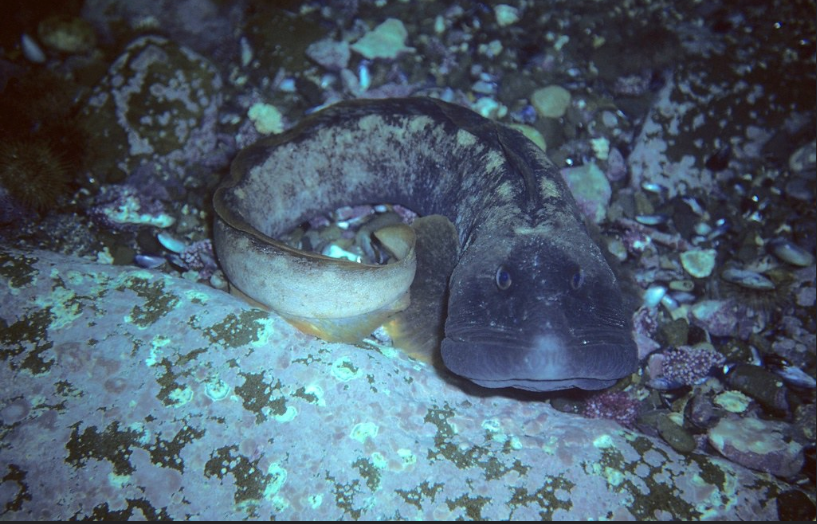
SIZE:
70 cm, up to 110 cm.
LIFE EXPECTANCY:
Up to 18 years.
LIFE CYCLE:
Sexual maturity when it reaches a size of around 30 cm.
Males and females mate in autumn, and fertilization takes place internally. Females lay eggs in gelatinous masses, protected in rock crevices. The parents watch over the eggs until they hatch, usually after two to three months.
The ocean pout has an elongated body similar to that of the eel, with a continuous dorsal fin. Its anal fin extends from the middle of its belly to its tail, connecting with the caudal fin. The pectoral fins are large and rounded, often tinged with red or orange. The large head is similar to that of a toad, with a wide mouth and plump lips. The jaws have two rows of blunt, conical teeth.
The upper part of the body is yellow to reddish brown, mottled with olive green or grey spots. Its underside is pale, somewhat yellowish.
Found close to the bottom, at depths greater than 300 m.
The ocean pout tolerates water temperatures between −0.5 and 16 °C.

The ocean pout is often found between algae and rocks on rather hard bottoms.
Credit : Derek Keats, photo taken in 2011.
PREYS:
Crustaceans
Molluscs
Urchins
Small fish
PREDATORS:
Cod
Stripped bass
Seals
Sharks
Belugas
No commercial fishing.
Ocean pout is an incidental catch in trawls, gillnets and longlines.
Although ocean pout appears to be a common species in the Gulf of St. Lawrence, it is of little commercial interest. Information on its abundance in Canada is limited, but it is not considered at risk.
Ocean pout is a Smarter seafood-listed species.
BENEFITS:
Rich in protein, zinc and vitamin B12.
LET’S COOK:
Firm texture, delicate and slightly sweet taste.
Although not widely consumed in Canada, ocean pout is used in traditional dishes in Newfoundland and Labrador. It can be prepared in a variety of ways, including frying it with garlic and chives, steaming it or including it in chowders or soups.
OUR CULINARY ADVICE:
- Do not overcook, or the texture can become rubbery.
- Fried with onion and chives, this fish is delicious.






